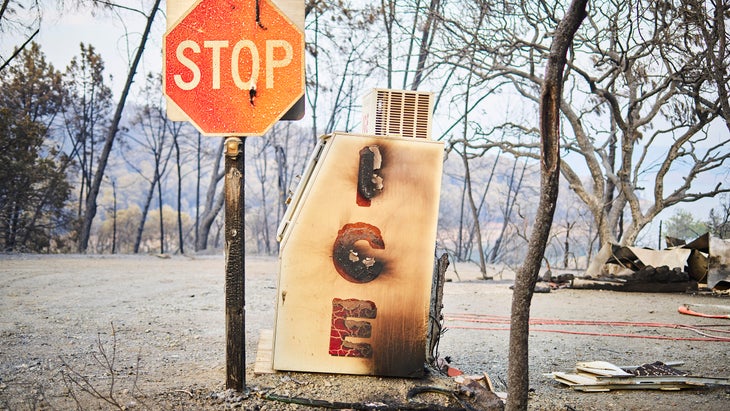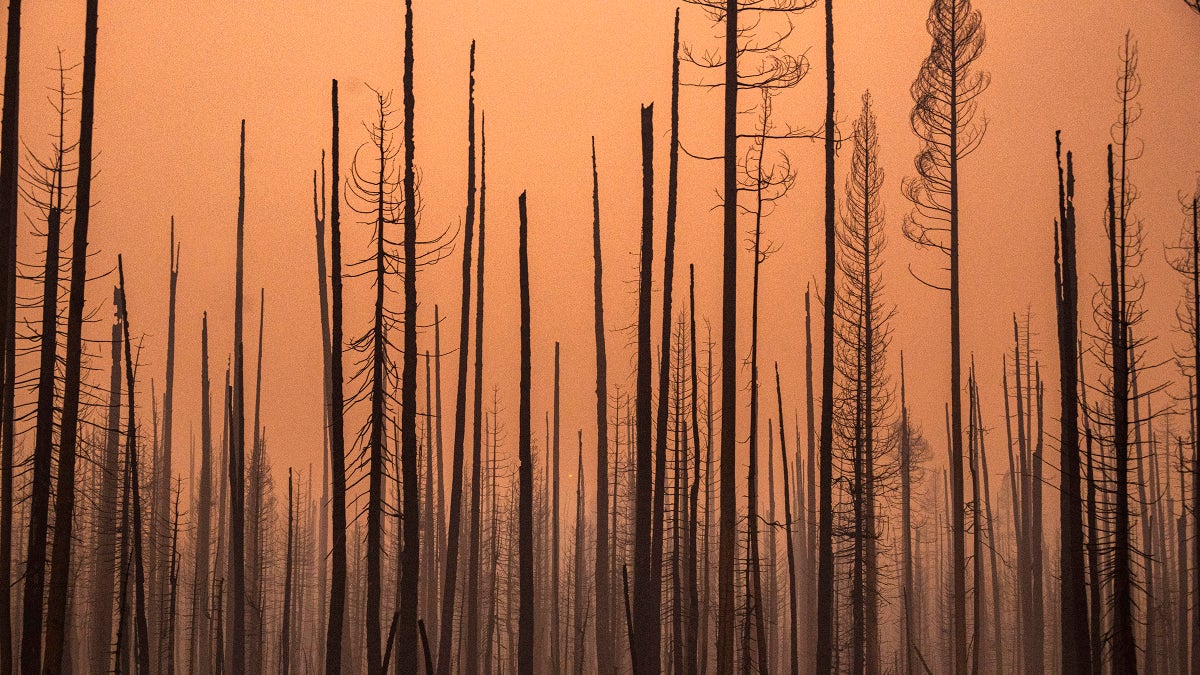No products in the cart.
Outdoor Adventure
A Look Inside the UN’s New 3,600-Page Climate Report
In 2004, public relations firm Ogilvy and Mather had an idea. By shifting the blame for carbon emissions away from giant fossil-fuel corporations and onto the shoulders of individuals, it could help its client, BP, escape blame for the environmental destruction it was wreaking. The result was a personal carbon-footprint calculator—a roaring success. Overnight, demand for so-called green products boomed, as consumers began asking themselves what steps they could take to prevent climate change.
However, a new report from the United Nation’s Intergovernmental Panel on Climate Change (IPCC) provides damning evidence that our efforts have been unsuccessful. In shockingly candid language, it concludes that the effects of climate change are already impacting the entire planet to a disastrous degree, threatening both the natural and man-made systems human life relies on. And it’s only going to get worse.
While the IPCC’s sixth assessment report makes clear that every fraction of a degree of global warming that we avoid is crucial to limit the severity of our climate’s impending disaster, and that reducing emissions is the only way to achieve this, it concludes that we’ve passed the point where we can hope to avoid disaster altogether. The bottom line: we must now adapt to it. It calls for world governments to build resilience and reduce risk for their populations.
Massive scientific reports like this are written in dry language that’s carefully vetted to avoid any potential for inaccuracy. Scientists say “We think” instead of “We know” and often use inscrutable numbers and dense graphs to describe things that, in the real world, may be dramatic and dangerous. The climate disaster is its own great example: an increase of 1.5 degrees Celsius (or 2.7 degrees Fahrenheit) from preindustrial global averages is bad but survivable; but with an increase of 2 degrees Celsius (3.6 degrees Fahrenheit) or more, our planet will become unrecognizable, if not unlivable, at least for some of us.
Half a degree doesn’t sound like that big of a deal. So how about, instead, the sentence UN secretary general António Guterres used to describe the assessment’s findings? He called it “an atlas of human suffering.”
And here’s some of that dry, carefully vetted language from the report itself: “Climate change has caused substantial damages, and increasingly irreversible losses, in terrestrial, freshwater and coastal and open ocean marine ecosystems (high confidence). The extent and magnitude of climate change impacts are larger than estimated in previous assessments (high confidence). Widespread deterioration of ecosystem structure and function, resilience and natural adaptive capacity, as well as shifts in seasonal timing have occurred due to climate change (high confidence), with adverse socioeconomic consequences (high confidence).”

Written by 270 researchers from 67 countries, and approved by 195 national governments, the 3,600-page report describes the practical impacts of climate change, both those that we’re already experiencing and those that will happen as the planet continues to warm. World leaders have agreed on a target limit of 1.5 degrees Celsius, but to achieve that, virtually all greenhouse-gas emissions would need to be eliminated by 2050. We’re already at 1.1 degrees, and the science says that unless massive, worldwide change occurs almost immediately, an increase of two or three degrees is more likely by the end of the century.
And even if we manage to limit warming to 1.5 degrees Celsius, this new IPCC assessment finds that we’re still pretty screwed. “Near-term actions that limit global warming to close to 1.5°C would substantially reduce projected losses and damages related to climate change in human systems and ecosystems, compared to higher warming levels, but cannot eliminate them all,” it reads.
The report explains that, currently, 3.5 billion people globally are already being forced to adapt to climate change. Highly populated areas of Iran, Pakistan, and India are already becoming too hot to sustain human life. At least five populated islands in the Pacific Ocean have already been lost to sea-level rise. In 2019, storms and flooding displaced more than 13 million people across Africa and Asia.
But while the effects of climate change are being felt disproportionately in developing countries that have contributed less to it, climate disaster is coming for the rest of us, too. “Even if global warming is limited to 1.5°C, human life, safety, and livelihoods across North America, especially in coastal areas will be placed at risk from sea level rise, severe storms, and hurricanes (very high confidence),” reads the assessment. It also reports that the risk of North American food production, water supplies, human health, economic activity, infrastructure, and ecosystems are all very high.
How bad is it going to get? The report goes as far as comparing the effects of the climate disaster on North America this century to the effects of European colonization on Indigenous people. “Recent climate-related changes represent cultural threats similar to the ones that occurred when European settlement began in the Americas over 500 years ago,” it says. Again, that’s straight from the report’s dry, carefully vetted scientific language.
So what can we do? “If we want to deal with climate hazards and reduce risks for people and ecosystems that come from climate change, we have to adapt,” concludes the report. It goes on to recommend sweeping, worldwide changes that include restoring wetlands, using Indigenous knowledge, changing where we live, modifying existing and building new infrastructure, and much more.
It also concludes that even vast, expensive, difficult adaptation will not be enough unless we also achieve that adaptation while eliminating greenhouse-gas emissions. “Adaptation is essential to reduce harm, but if it is to be effective, it must go hand-in-hand with ambitious reductions in greenhouse gas emissions because with increased warming the effectiveness of many adaptation options declines,” the report finds.
Worryingly, the assessment goes on to acknowledge that rectifying all of this simultaneously will be an unprecedented challenge. “In brief: ambition, scope, and progress on reducing climate risks are rising, but not by enough,” it says. “According to our new report, the world is currently under-prepared for the coming climate change impacts, particularly beyond 1.5°C global warming.”
“The choice is not between if we transform or not anymore,” Edward R. Carr, one of the report’s authors, told The New York Times. “The choice is, do we choose transformations we like? Or do we get transformed by the world in which we live because of what we’ve done to it?”
That’s a good question. And one that I think applies as much to the individual as it does to society as a whole. Should each of us wait around for the same governments and corporations that failed to prevent the climate disaster to decide how our lives will be transformed, or do we go ahead and start transforming them ourselves? Just like we used to ask ourselves what we could do to prevent it, it’s time to start asking ourselves instead: “How am I preparing for the climate disaster?”
Source link

